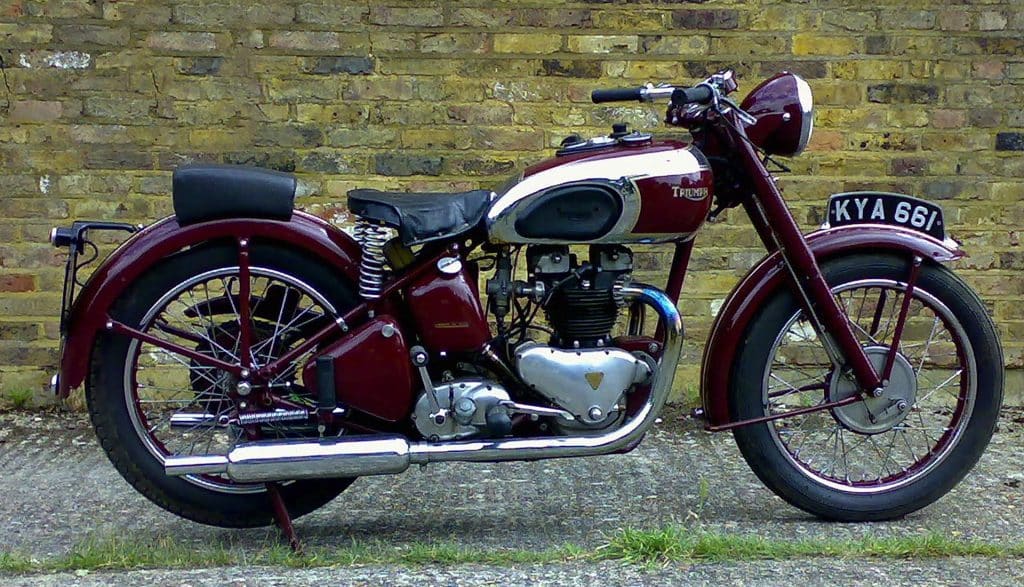The Speed Twin 5T was a motorcycle made by Triumph at their Coventry, and later Meriden factories. It was a 500cc OHV vertical twin in a lightweight frame and the first truly successful British parallel twin, setting the standard for many twins to follow.
Edward Turner, Triumph’s Chief Designer and Managing Director, launched the Triumph Speed Twin at the 1937 National Motorcycle Show and it proved to be a major turning point for the British motorcycle industry, as although a 500cc parallel twin of medium capacity was not revolutionary, the model was lighter than many contemporary singles with significantly more power and torque. Early models were only available in ‘Amaranth red’ with hand painted gold pinstripes to set off the chrome.
The two cylinders were fed by a single Amal Type 6 carburettor and many features such as the transmission and clutch were straight from the Triumph single. Originally with girder forks, the sprung saddle was the only rear suspension as the Speed Twin had a rigid frame – also from the single cylinder production line.
On the night of 14 November 1940 the majority of the city-centre of Coventry was destroyed by German bombing and the Triumph factory (which was working on an order of thousands of military specification 5Ts at the time) was completely wiped out with all of Triumph’s technical records, drawings and designs destroyed.
After the war the recovery of Triumph at Meriden was largely due to the Speed Twin, which was re-developed in 1946 with telescopic forks and optional sprung hub rear suspension.
The headlamp and instrument area was tidied up in 1949 with the Turner designed nacelle, a feature retained until the end of the model line. In 1953, the Speed Twin caused controversy among traditional British riders as the generator and magneto were replaced with a Lucas alternator and battery/coil ignition system.
The Speed Twin was used by the Metropolitan Police Special Escort Group from 1952 until 1959.
Further development led to the 1959 model 5TA with a unit engine and gearbox construction and styling changes including the unpopular ‘Bathtub’ fairing which became more and more abbreviated as the model developed before disappearing altogether for the last year of production in 1966.
The unit 500 engine continued development in the parallel Tiger 100 range ending with the Tiger Daytona models which ceased production in 1973.
